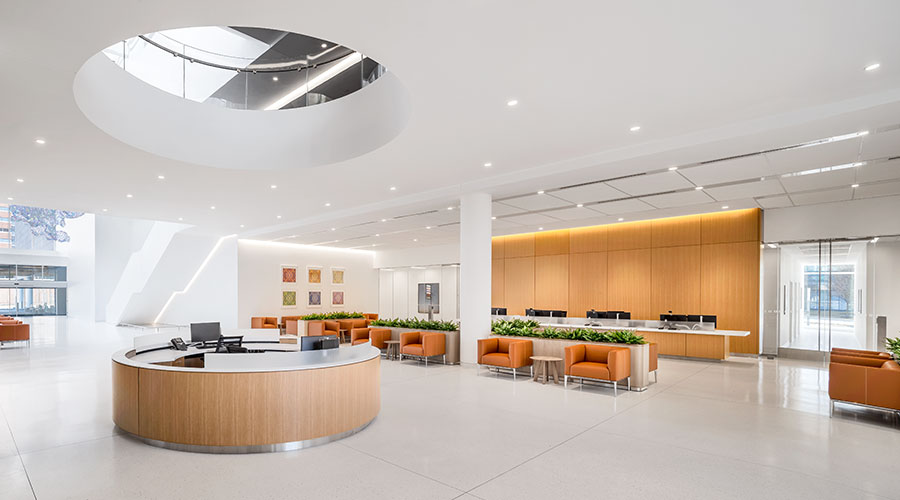As healthcare facilities enter the third year of the COVID-19 pandemic, facilities managerscontinue to look for new and effective ways to combat the spread of the coronavirus and its variants. While manymanagers have targeted their facilities' indoor air quality (IAQ), lighting changes have been proven to play a role in the way patients are reacting to their care. In this manufacturer roundtable, Healthcare Facilities Todayasks lighting professionals about the ways lighting choices can impact patient care and how managers can tap into the technologies’ benefits.
How does lighting impact patient care? What should facility managers consider when making decisions about lighting choices?
"UV-C lighting can dramatically improve patient care. We are now able to disinfect the devices the patient and staff touch and use regularly. UV-C lighting is extremely effective in helping to disinfect the beds, furniture, and equipment in the patient’s room. Lastly, UV-C is highly effective in helping to disinfect the air that the patients, caregivers, and visitors are constantly breathing.
Facility managers need to think of howoften do they need to disinfect high-touch items, such as mobile devices, laptops, communication appliances, etc.? If it is more than once a day, and many units need that, using a UV-C application to disinfect many devices quickly might be advantageous for that unit. All areas of the facility need air purification. However, highly populated and utilizedcommon areas need more attention. UV-C, along with good filtration, can make sure those spaces are safer for patients, visitors, caregivers and staff."
— Bill Mauzé, President, INVZBL
"UV-C light can help fight against infectious aerosols in patient rooms and other areas to decrease the germ load, reducing the likelihood of hospital acquired infections (HAIs) and the spread of viruses amongst patients, staff, and visitors. When choosing UV-C light devices for air disinfection,it’s important to consider safety, UV intensity, and ease of installation into the built environment. In-room devices, wall-mounted or portable, have an internal fan for circulating air through the UVC lamps inside, which helps ensure disinfected air circulates through the room and that UV light is safely contained. Both in-room and in-duct UV-C lamps need to produce enough intensity for the volume of air, and the velocity of air for in-duct systems. Work with a manufacturer who can properly size their system for your specific needs."
— Jim McMahon, Vice President ofSales Americas, Heraeus Noblelight America
"Lighting has the ability to directly impact the perception and quality of care that a patient receives at healthcare facilities. The evolution of illuminating patient-care spaces, including patient rooms, restrooms, surgical theaters, and even foyers and lobbies, has grown substantially with the advancements in LED chip technology and controls. Technologies including tunable white, high color rendering, and controls allow the patient to have autonomy over his or her surroundings, allow the patient to experience quicker recovery times, help reduce medical professional errors, and allow for a space to be illuminated based on the needs of the patient and medical professional.As professionals who work with lighting, we are in a very exciting time where we can not only treat the patient but treat the room against pathogens that may lead to healthcare acquired infections, making the patients, their family, and the healthcare professionals feel safer. In fact, UV light disinfection technology can be considered as crucial as pleasant and inviting lighting or spacious and efficiently designed patient room layouts in making these critical areas not only welcoming for patients and families but also optimized for staff to provide excellence in care."
— Tommy Nichols, Architectural Sales Director, Acuity Brands
"All healthcare facilities wage a three-pronged war against diseases, combatting the spread of hospital-acquired infections, anti-microbial resistant threats, and emerging diseases.For nearly a century, scientists have known that ultraviolet germicidal irradiation (UVGI), or light in the 253.7 nm UV-C wavelength,alters the protein structure in pathogens—DNA in bacteria and fungi, RNA in viruses—rendering cells inactive and unable to replicate. Through a process known as photodimerization, this genetic damage destroys a cell’s nucleic acids and protein structure, preventing microorganisms from infecting and reproducing. What’s more, this germicidal process takes place without the creation of chemicals, VOCs, or dangerous byproducts. Based on published ASHRAE guidance on infection control, germicidal UV located in in-duct and upper-air applications is an extremely promising control strategy to address this pandemic. UVGI has been extensively peer-reviewed and is recognized in two ASHRAE handbook chapters, two ASHRAE test standards, as well as two ASHRAE position documents.UV-C can be installed inexpensively throughout healthcare facilities by using upper-room units for interior spaces, lamps in HVAC ducts, and exhaust systems for airstream disinfection and in air handlers to disinfect airstreams, coils, air filters, drain pans, and other potential reservoirs for microbial growth and proliferation."
— Dean Saputa, Vice President ofSales, UV Resources
Mackenna Moralez is assistant editor with Healthcare Facilities Today.

 Should We Be Testing Toilet Water in Patient Restrooms?
Should We Be Testing Toilet Water in Patient Restrooms? Healthcare Union Petitions for Increased Staff Safety at HCA Florida Hospitals
Healthcare Union Petitions for Increased Staff Safety at HCA Florida Hospitals HGA Announces Completion of the Jeffrey and Patricia Cole Pavilion
HGA Announces Completion of the Jeffrey and Patricia Cole Pavilion Healthcare Facilities Look to Future-Proof Facilities
Healthcare Facilities Look to Future-Proof Facilities Yale New Haven Health Experiences Data Breach
Yale New Haven Health Experiences Data Breach